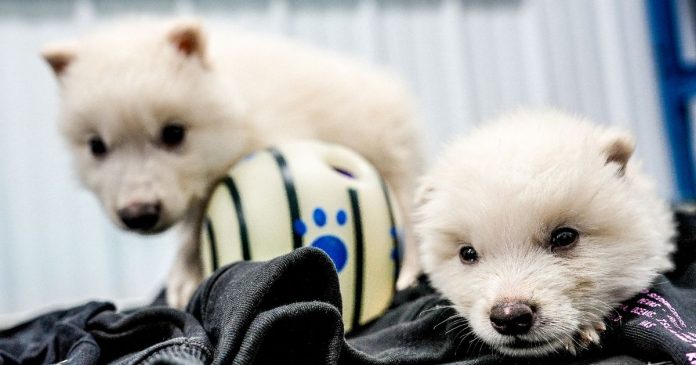Scientists have shocked the world by bringing back the extinct dire wolf species which disappeared from our planet more than 10,000 years ago, but the remarkable genetic engineering company behind the marvel isn’t stopping there. Texas-based firm Colossal Biosciences revealed its plans to de-extinct several other historic creatures.
Incredible videos showed the three dire wolf pups brought to life through gene-editing and tracking down ancient DNA, in what has been described as a “massive milestone”. The snowy-white wolves are best known for their fictional role in Games of Thrones but they are just one of the iconic ancient animals scientists at the ground-breaking firm are trying to bring back to life.
Genetic engineers at Colossal said the incredible process started by extracting blood cells from the closest living relative of the dire wolf – a living grey wolf. These were genetically modified then DNA was extracted from fossils and museum specimens of the extinct species.
Researchers then unravelled this genetic data to compare the pre-historic genome to its relative’s. The living wolves’ DNA was modified to match the extinct species as closely as possible. Colossal’s CEO Ben Lamm praised said: “I could not be more proud of the team. This massive milestone is the first of many coming examples demonstrating that our end-to-end de-extinction technology stack works.
“Our team took DNA from a 13,000-year-old tooth and a 72,000-year-old skull and made healthy dire wolf puppies.” The incredible process has already been used by Colossal Biosciences to start bringing back other creatures that have been extinct for thousands of years.
The firm sequenced a woolly mammoth’s genome and claimed it was “positive” the creatures – which have not roamed the planet for around 4,000 years – could be brought back in the next few years. Colossal also claimed it has discovered how to produce elephant stem cells crucial to the de-extinction process.
CEO Lamm claimed the first calves of this disappeared species could be born in the next few years. Chief science officer Beth Shapiro revealed scientists created “woolly mice” in March as a stepping stone toward re-introducing the mammoths.
She said: “This is exciting to us because it confirms that the genes and gene families that we identified using our comparative genomics approach really do cause an animal to have a woolly coat and a golden coat and longer hairs. And this is the way that we’re going to create mammoths for the future.”
Dodo birds are also on Colossal’s de-extinction list as the firm revealed it would use preserved DNA from dodos in museums to genetically engineer the genome. A genetic sequence for the iconic species was recreated in 2022 but the CEO explained it needed to engineer genetic diversity into the birds, which has kept this project a few steps behind the others.
The Tasmanian tiger, also known as the thylacine, is also on the incredible de-extinction list as Colossal Biosciences claimed last year that it had made a huge breakthrough in bringing back the marsupial, which has been extinct since 1936. The team sequenced the full genome in 2017 but discovered a 108-year-old preserved specimen in 2024 that allowed researchers to extract a DNA sequence they claimed was 99.9% the same as the original.
Despite Colossal Biosciences’ major recent successes, experts have cautioned that the process did not create an exact replica of the extinct dire wolf. Zoologist Philip Seddon, a professor at the University of Otago in New Zealand, described them as “genetically modified grey wolves”.
At Reach and across our entities we and our partners use information collected through cookies and other identifiers from your device to improve experience on our site, analyse how it is used and to show personalised advertising. You can opt out of the sale or sharing of your data, at any time clicking the “Do Not Sell or Share my Data” button at the bottom of the webpage. Please note that your preferences are browser specific. Use of our website and any of our services represents your acceptance of the use of cookies and consent to the practices described in our Privacy Notice and Cookie Notice.


